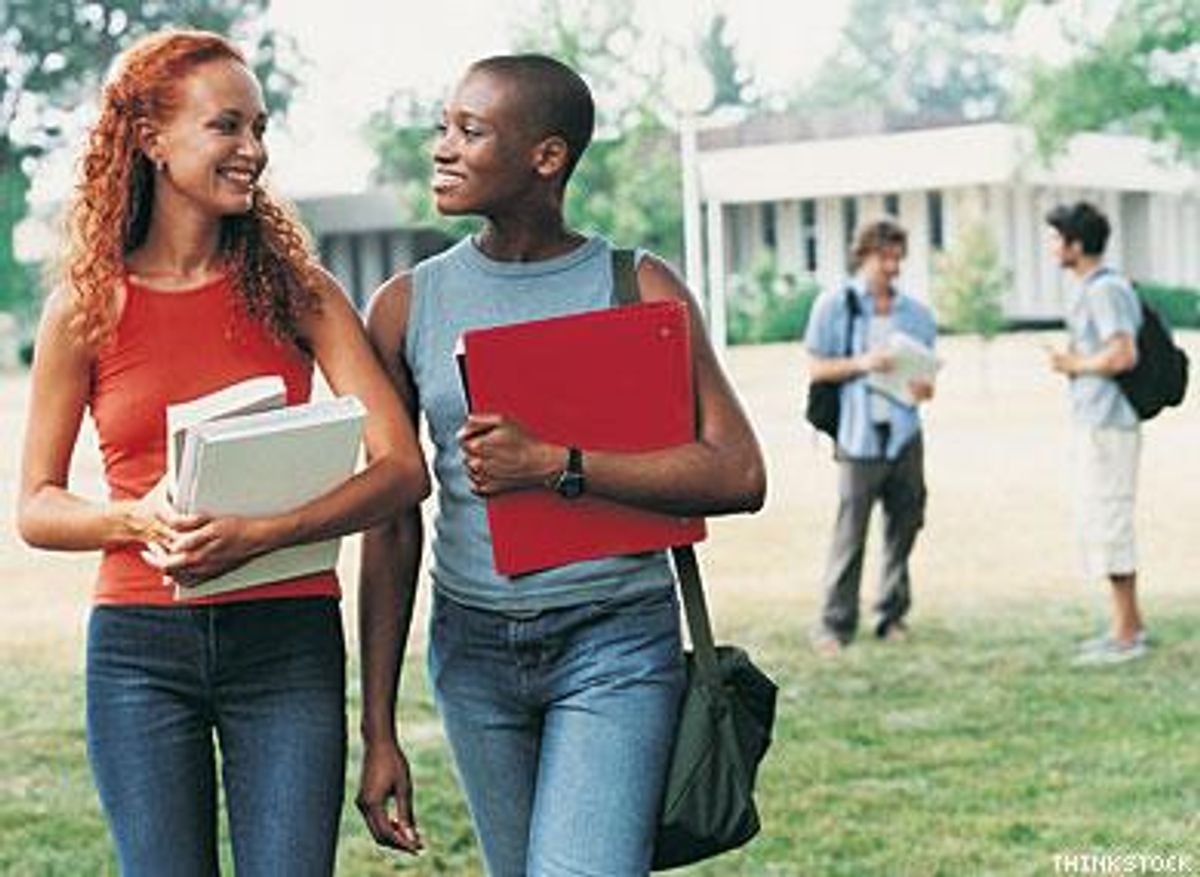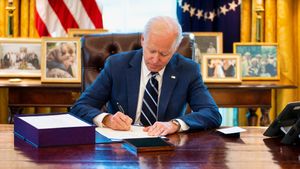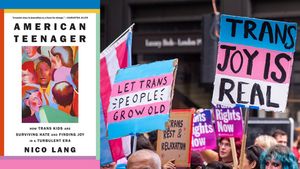
CONTACTStaffCAREER OPPORTUNITIESADVERTISE WITH USPRIVACY POLICYPRIVACY PREFERENCESTERMS OF USELEGAL NOTICE
© 2024 Pride Publishing Inc.
All Rights reserved
All Rights reserved
By continuing to use our site, you agree to our Private Policy and Terms of Use.
COMMENTARY: "My next-door neighbors in the dorm are very violent, especially when they drink. They physically threatened me and brought my gender expression into the matter, which was totally unrelated. This makes me feel very unsafe living in my dorm, but I have not reported them for fear of retaliation."
"I was the victim of a hate crime. I was called a 'tranny freak' and physically assaulted in a public space on campus. My attack was one in a series of assaults on campus and my university was less than responsive."
These are two real-life examples of what is happening every day on college and university campuses across the country. For years, college administrators and other officials have been paralyzed by a combination of invisibility of lesbian, gay, bisexual, and transgender concerns and a lack of credible data to address these concerns. They don't have that excuse anymore. Released this week, Campus Pride's 2010 State of Higher Education for LGBT People is the most comprehensive national report of its kind and gives voice to the experiences of LGBT students, faculty, and staff so we can for the first time listen and learn the truth the good and the still very bad.
The Good: Throughout the United States, the everyday lives of lesbian, gay, bisexual, and transgender people are increasingly visible. We see some young people developing positive identities at earlier ages than ever before. Activists are gaining electoral and legislative victories. Primarily in academic settings, greater emphasis and discussion is centering on what has come to be called "queer theory," and curricula are more inclusive of the LGBT experience.
The Still Very Bad: In the midst of these progressive advancements, however, conditions related to campus climate often remain difficult for LGBT students. Many students face daily harassment and attacks by their peers inside and outside the classroom. The negative impact of this harassment leads to increased absenteeism, academic difficulties, and increased risk of dropping out of school entirely. Also, they have increased risk of alcohol and drug use and abuse as well as mental health issues such as depression, anxiety disorders, increased fear and withdrawal from family and peers, post-traumatic stress disorder, low self-esteem, poor body image, and suicidal ideation, attempts, and completion.
In the early 1990s, a report by the National Gay and Lesbian Task Force discovered that one fifth of all reported incidents of harassment and violence directed against LGBT people occurred on college and university campuses. Over a decade later, Campus Pride1s 2010 State of Higher Education for Lesbian, Gay, Bisexual, and Transgender People finds that a quarter of all LGBT students, faculty, and staff report experiencing harassment, with an even greater percentage for transgender people. More than half of all LGBT students, faculty, and staff hide their sexual identity or gender identity. Particularly troubling for colleges is that one third of LGBT students report having seriously considered leaving their campus due to the challenging, often hostile climate. These students also discouraged future students from attending their respective campus, and they experienced lower educational outcomes and more negative identity development issues of self-esteem, and emotional, mental, and physical health.
But there are things we can do to make the situation better.
The Good: Our research shows that schools can make and have indeed made a marked and powerful difference in improving the overall campus climate when they very consciously, directly, and visibly address problems of bullying, bias and harassment. An increasing number of K-12 institutions are incorporating LGBT issues age-appropriately into school curricula. In 2003 only 99 institutions of higher education had offices or centers that focused on the issues and concerns of LGBT people. In 2010 that number has risen to 160. We also see increased training opportunities for faculty and staff on the needs and experiences of LGBT students, more resources in school libraries and classrooms, the extension of equal benefits to LGBT faculty and staff and their partners, and the implementation of LGBT-inclusive antibullying, harassment prevention, and nondiscrimination policies. Some colleges and universities are even beginning to raise LGBT youth issues in teacher education programs.
There is no question that LGBT students, faculty, and staff are integral and vital members of our campus communities throughout this nation and the world. The research has conclusively exposed the inequities, and the best practices contained in the report have shown proven results. It is time for our colleges and universities to step up to secure the safety of and the equity for all people. We still have a long way to go to ensure a safe learning and working environment LGBT people and for institutions of higher education to realize their mandate of providing the best quality education for all students. We also have the information and the road map we need. Let's use it.
From our Sponsors
Most Popular
31 Period Films of Lesbians and Bi Women in Love That Will Take You Back
December 09 2024 1:00 PM
18 of the most batsh*t things N.C. Republican governor candidate Mark Robinson has said
October 30 2024 11:06 AM
True
After 20 years, and after tonight, Obama will no longer be the Democrats' top star
August 20 2024 12:28 PM
Trump ally Laura Loomer goes after Lindsey Graham: ‘We all know you’re gay’
September 13 2024 2:28 PM
Melania Trump cashed six-figure check to speak to gay Republicans at Mar-a-Lago
August 16 2024 5:57 PM
Latest Stories
TikTok is obsessed with this 90-year-old who just came out after 63-year lavender marriage
December 25 2024 10:51 AM
The 25 best queer films of the century so far
December 25 2024 10:48 AM
2024's best (and hottest) queer art & photography
December 25 2024 10:46 AM
Extensive cover-up effort revealed in L.A. County deputy's beating of trans man
December 24 2024 4:51 PM
Babygirl's Nicole Kidman, Halina Reijn on women, sex, and power
December 24 2024 4:19 PM
Transgender youth endangered as anti-trans defense budget is signed into law by Biden
December 24 2024 2:38 PM
President Joe Biden signs into law first federal anti-LGBTQ+ bill in decades
December 24 2024 10:27 AM
What about Amber Heard? This Blake Lively 'smear campaign' sure feels familiar
December 24 2024 7:45 AM
The Advocate's 25 top LGBTQ+ news stories of the century so far
December 23 2024 7:46 PM
Gay arts and entertainment journalist Gil Kaan has died at 72
December 23 2024 6:19 PM
California Gov. Gavin Newsom signs new law protecting LGBTQ+ students from being outed
December 23 2024 5:14 PM
Get ready for Aspen Gay Ski Week 2025
December 23 2024 4:24 PM
Donald Trump promises transphobic policies that will target youth and service members on 'day one'
December 23 2024 12:28 PM
Matt Gaetz allegedly paid tens of thousands of dollars for sex and drugs: House Ethics report
December 23 2024 10:41 AM
















































































